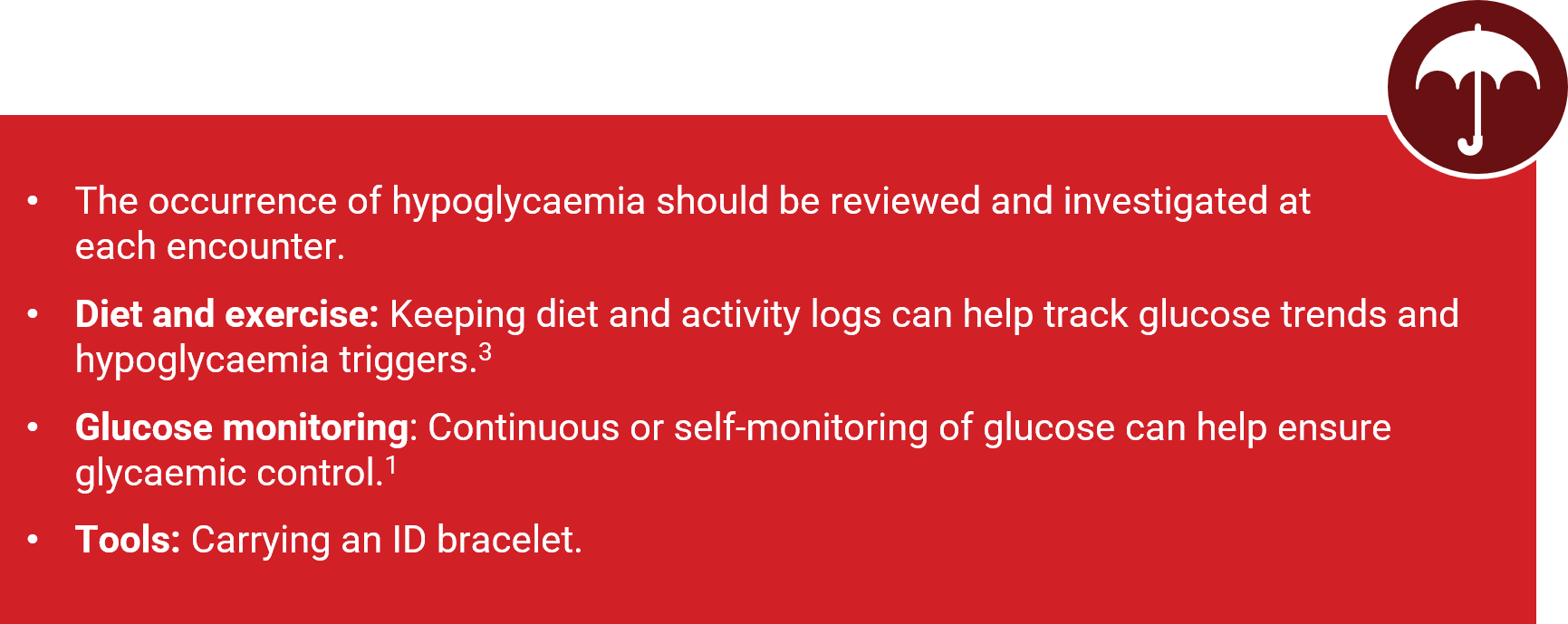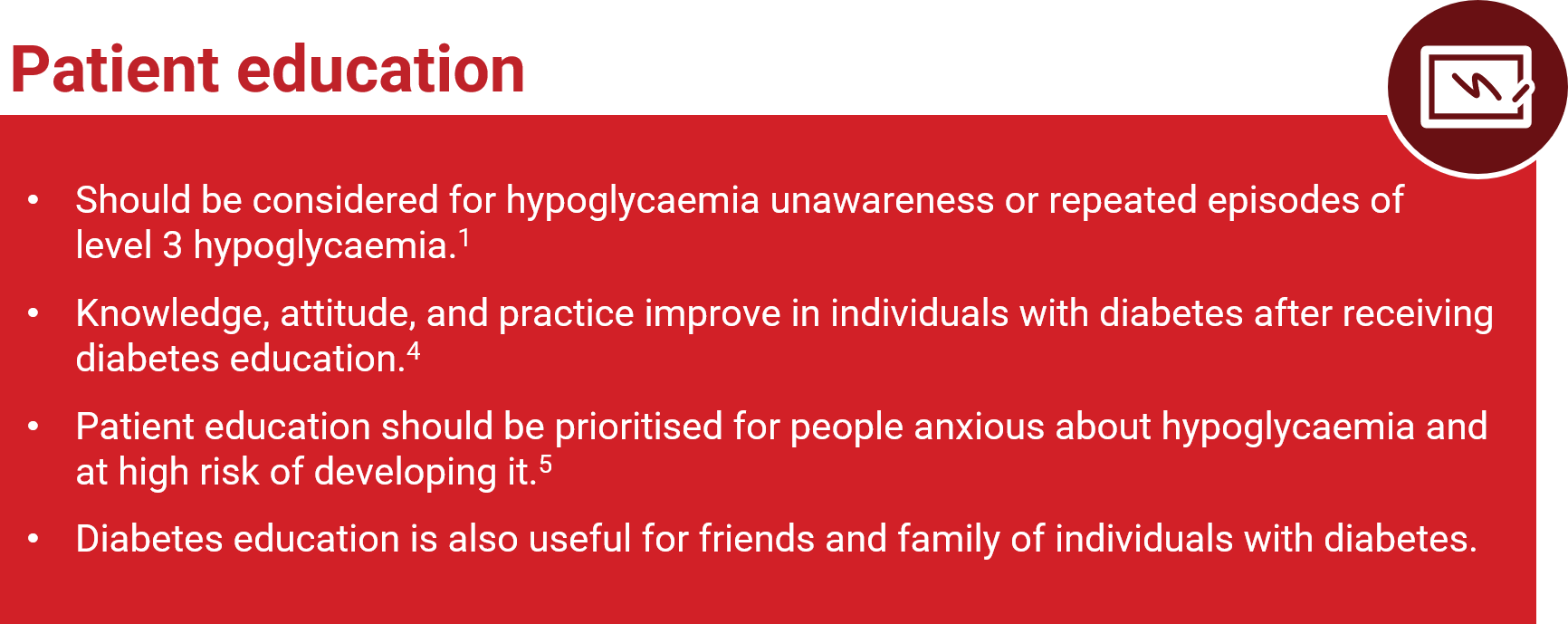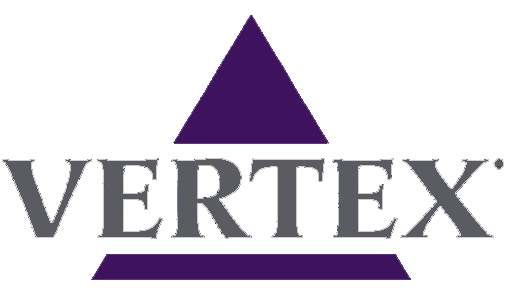How to treat moderate & severe hypoglycaemia (Levels 2 & 3)
Conscious person: Consuming 15–20 g of pure glucose is the preferred treatment, but any form of carbohydrates containing sucrose (such as candy, juice, or soft drink) may be used. If self-monitored blood glucose remains less than 4.0 mmol/L after 15 minutes, this treatment should be repeated.1
Unconscious person: Emergency services should be called and 1 mg of glucagon should be given subcutaneously (under the skin) or intramuscularly (in the muscle). In a hospital with intravenous (IV) access, 10–25 g of glucose should be administered IV.2
How to treat mild hypoglycaemia (Level 1)
Consume 15 g of fast-acting carbohydrates (such as juice or soft drink).2
Hypoglycaemia prevention strategies


References
- 1American Diabetes Association; 6. Glycemic Targets: Standards of Medical Care in Diabetes—2021. Diabetes Care 1 January 2021; 44 (Supplement_1): S73–S84.
- 2Diabetes Canada Clinical Practice Guidelines Expert Committee. Diabetes Canada 2018 Clinical Practice Guidelines for the Prevention and Management of Diabetes in Canada. Can J Diabetes. 2018;42(Suppl 1):S1-S325
- 3Kreider KE et al. Practical Approaches to Diagnosing, Treating and Preventing Hypoglycemia in Diabetes. Diabetes Ther. 2017;8:1427–1435.
- 4Bhutani G et al. Effect of diabetic education on the knowledge, attitude and practices of diabetic patients towards prevention of hypoglycemia. Indian J Endocrinol Metab. 2015;19:383–386.
- 5Cho NH et al. Patient Understanding of Hypoglycemia in Tertiary Referral Centers. Diabetes Metab J. 2018;42:43–52.


